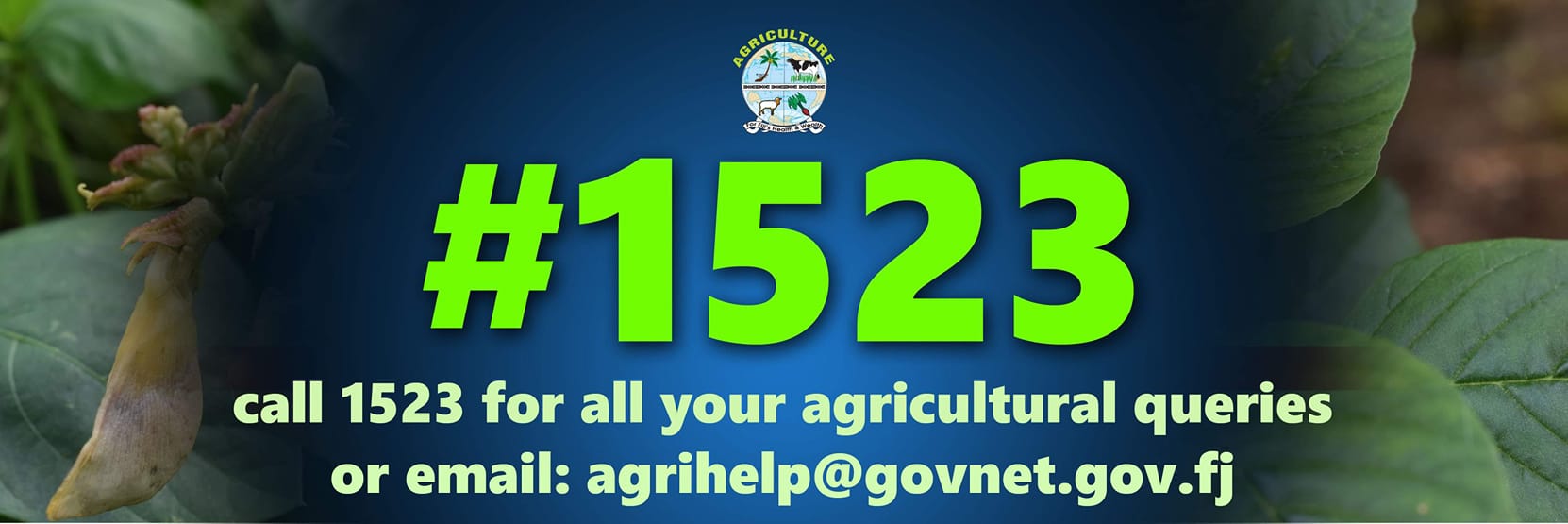TURMERIC TASKFORCE TEAM VISIT WESTERN FARMERS AND EXPORTERS
April 25, 2024

A Turmeric Taskforce Team from the Ministry of Agriculture and Waterways are currently visiting farmers and exporters in the Western Division this week, to gauge the supply and demand of turmeric as well as market opportunities.
Led by Senior Agriculture Officer (Tailevu), Mr Esava Tuimoala, the visit enabled them to collate important information for formulation at the national level to further enhance the production of turmeric so that everyone along the supply chain benefits starting with farmers.
Turmeric is a perennial plant with a short stem and tufted leaves which originated in India and Southeast Asia. It is a member of the Curcuma botanical group, which is part of the ginger family of herbs, the Zingiberaceae.
In Fiji the turmeric production areas is mainly in Tailevu and Rewa while most turmeric are found growing in the wild in Vanua Levu and in some areas in Ra, Nadroga and Navosa.
Recent domestication of Turmeric production has been done in Nasaucoko, Bemana and Namara in Tailevu.
“We also conducted training for turmeric suppliers. Most of the farmers in the West have been harvesting wild turmeric while only a few farmers have invested in planting turmeric,” explained Mr Tuimoala.
“We were truly intrigued with the number of exporters that we visited here in the West as they have been supplying certified organic turmeric to the United States of America markets.”
Owner of Saurabh Patel Exports and Import PTE LTD, Mr Saurabh Patel is grateful that the Turmeric Taskforce team visited his bulk yard to witness the ongoing operations.
“I am grateful to be sharing information with the ministry staff on our operations and how we can collaborate further into growing the export of turmeric,” said Mr. Patel.
Mr Patel started his export business in 2006 since arriving from India and has not regretted venturing into this commodity as the volume of export for turmeric keeps increasing to date.
“The volume of turmeric exports has increased tremendously for the last 4 years and has not slowed down as the demand on the export market is rapidly increasing. Consistency in supply is not an issue as farmers supply turmeric on a weekly basis”’ he said.
Fiji has three varieties of turmeric called the Yellow flesh, White flesh and Black flesh variety.
“Farmers from as far as Namara in Tailevu, villages in Nadroga and Navosa Provinces as well as interior communities in Nadi and Ba are also supplying to my company for fresh turmeric exports,” added Mr. Patel.
He believes that agriculture
is the key to increasing livelihoods and says that during the pandemic, his
export business continued as his cargo and other agricultural produce continued
to make their way to the overseas markets.
Mr. Tuimoala says that Mr Saurabh is a classic example of dedication and commitment to growing the agricultural sector in Fiji.
“We need more farmers to engage with the Ministry of Agriculture and Waterways and make the first step towards utilising the land. We have a variety of crops to plant using the vast land that is unutilised in our communities. We must be innovative and learn to take farming seriously because it is a huge source of food and income security,” advised Mr Tuimoala.
“There are a lot of produce that is leaving our shores for overseas markets, and yet a lot of landowners are still clueless of how to utilise their land. The Ministry of Agriculture and Waterways will continue to encourage farming in our communities especially with our women and youths but we need more commitment and dedication,” stressed Mr Tuimoala.
According to data from Fiji Bureau of Statistics, Fiji’s agriculture exports in 2020 when compared to 2019 showed notable increases in Turmeric apart from other commodities like kava, dalo and ginger.
The increase is around FJ$7.7
million (118%) in 2020 with major increases in exports to the United States,
Canada, Netherlands and Australia. During 2020, Fiji also exported turmeric to
the United Arab Emirates.
Turmeric powder market is mainly segmented into food and beverage, pharmaceutical & health supplements and cosmetics and it is expected that the current dominance of the non-organic segment would diminish as supply of organic turmeric rises.
-End-
